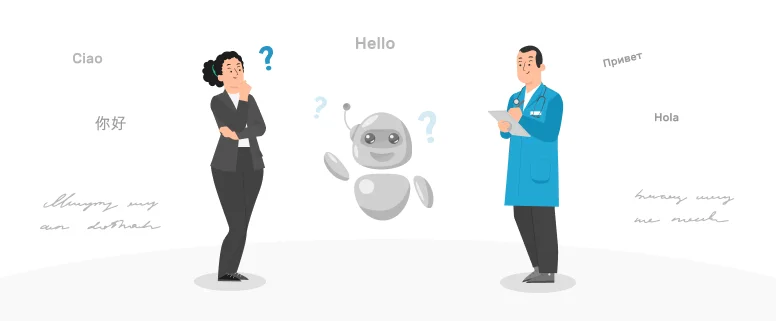As is generally agreed that it is the duty of the translator to be faithful to the original. Faithfulness, as a primary requirement for all translation has the most important bearing on scientific and technological translation, in which the achievement of accuracy is paramount. And this is especially the case in medical translation, where the consequence of mistranslating a word could mean life or death. Take this sentence for example,
“the face may be flushed and the conjunctivas are sometimes injected”.
If this sentence is translated as “面部发红,结膜有时被注射”, maybe unexpectedly dangerous thing will happen because this sentence actually means that “面部发红,结膜有时充血”. The reason why we hold that the translator should use translation unit as small as a word to ensure accuracy is that the frequent use of medical and semi-medical terms distinguishes medical literature.
One lexical features of medical literature is that pure medical terminology presents no problem for the translator to achieve accuracy as long as he or she is equipped with desirable medical dictionaries, but semi-medical terms leave the translator much more choices to make unless he or she is sufficiently acquainted with the respective subject一matters, since either bilingual and/or “standard” English dictionaries are not designed to give translator much help with these particular problems, even medical dictionaries would not provide them with enough items to choose. Familiar words may have unfamiliar meanings, as is shown by the above example. To help clarify the case we found more examples as follows:
(1) Acute and sub-acute hepatic necrosis more often complicates hepatitis in the elderly.
误:急性与亚急性肝坏死往往使上了年纪的人的肝炎复杂化。
正:上了年纪的肝炎患者往往并发急性与亚急性肝坏死。
(2) Essential hypertension is the name given to the type of hypertension for which no cause can be found.
误:原因不明的高血压称为重要高血压。
正:原因不明的高血压称为原发性高血压。
(3) In such cases heart murmur is often present.
误:在这类病例中,常有心脏的低沉声。
正:这类病例常有心脏杂音。
(4) Abnormal modes may be hard, soft or even fluctuant; tender or not; discrete or matted.
误:异常的淋巴结可硬可软,有些甚至是活动的;可嫩可老;有些是分散的,有些则缠结在一起。
正:异常的淋巴结可硬可软,有些甚至是活动的;有压痛或无压痛;有些是分散的,有些则缠结在一起。
The special meanings of common words in medical context can be fixed, so it is relatively easier to understand compared with those which are not used in a fixed way, and therefore make a higher demand of the professional knowledge in the translator. In this case the translator would necessarily employ the technique of “extension”. We mean “extending” by “clarifying” and “specifying” from the perspective of medicine-specific knowledge, so as to make it accurate in message and cohesive to medical style. Look at the examples:
(1) There is less embarrassment of physiologic functions, which benefits the patients recovery.
误:生理功能的尴尬较少,这有助于病人恢复健康。
正:生理功能损害较少,这有助于病人恢复健康。
(2) Some innocent tumors can be anything but innocent in their effect; they may grow within an organ, increase in size, and cause considerable mechanical damage.
误:当然,有些无辜肿瘤产生的作用根本不是无辜的,它们可能在一个器官内成长,体积增大,并引起相当大的功能损害。
正:当然,有些良性肿瘤产生的作用根本不是良性的,它们可能在一个器官内成长,体积增大,并引起相当大的功能损害。
(3) These patients may recover completely in four or five days, the lung clearing up very rapidly.
误:这些病人可能四、五天就会痊愈,肺部会被迅速清理干净。
正:这些病人可能四、五天就会痊愈,肺部症状很快就会消失。
(4) The abdomen is silent when ileus become adynamic, which occurs when pertonitis is superimposed or when large segments of bowels are infarcted.
误:肠梗阻失去活性时,腹部就安静了。这种情况在并发腹膜炎或大段肠梗阻时才发生。
正:肠梗阻成为麻痹性时,肠鸣音消失。这种情况在并发腹膜炎或大段肠梗阻时才发生。
Besides that the translator should be cautious about the “uncommon meaning of a “common word” to achieve faithfulness to the original message, he or she should also be aware of another kind of common words which have no particular medical sense, but when he translates them, he must be selective about the Chinese words to ensure their cohesiveness to medical style and follow the well-established way in the medicine field, in other words, the translator should use “jargons”. Look at these examples:
(1) The disease fails to respond to medical treatment.内科治疗此病无效。
(2) Should constipation be a feature of illness, the bowel should be washed out every second day.如果便秘是此病的一种特征,应隔天灌肠一次。
(3) Another favorite spot for an embolus to strike is the brain.血栓的另一好发部位是脑。
(4) One of the important warning signs of carcinoma of the stomach is persistent indigestion.长期消化不良是胃癌的重要先兆症状之一。
Take a look at how we helped our client by localizing their project for Life Sciences Industry. Click here to read the complete case study
If a translator translates this sentence in a simple faithful way as “如果你要知道我们血液的成分,你就必须用显微镜观察”. We think he failed to embody the technical style of this sentence. This sentence aims to present a fact and this fact is universal to “I”, “you”, “he/she”, “we” and “they”. Universality of truth is always the most outstanding feature in sciences of all kinds. The word “you” and “our” in this sentence destroy the technical style, and will cause ambiguity to the universality of the truth.
Therefore in rendering it into Chinese, the translator had better omit these two words and interpreted as “如果要知道血液的成分,就必须用显微镜观察”. Let us present another similar example: “the patient kept his mouth closed over the thermometer until it reaches the temperature of his body”.(患者口含体温表,测量体温). It is clearly seen from the above discussions that to achieve accuracy in medical translation is challenging firstly in the way that it contains many medicine-related common words.
And faithfulness to the content must be in accompany with style, the individual style of medical language and universal style of scientific language. This requirement can only be met by those translators who are facilitated with considerable knowledge of medicine to carry out the informative function of medical texts in their best sense.
Also, he or she needs good command of established medical expressions. Not only this, the translator should also possess good dictionaries to facilitate his or her translation.
But there is still a gap, therefore we suggest reading medical texts, preferably bilingual ones, which provide the translator with both the medical and linguistic knowledge he needs and present terms in a context containing sufficient information to show their exact meaning as well as their usage.


